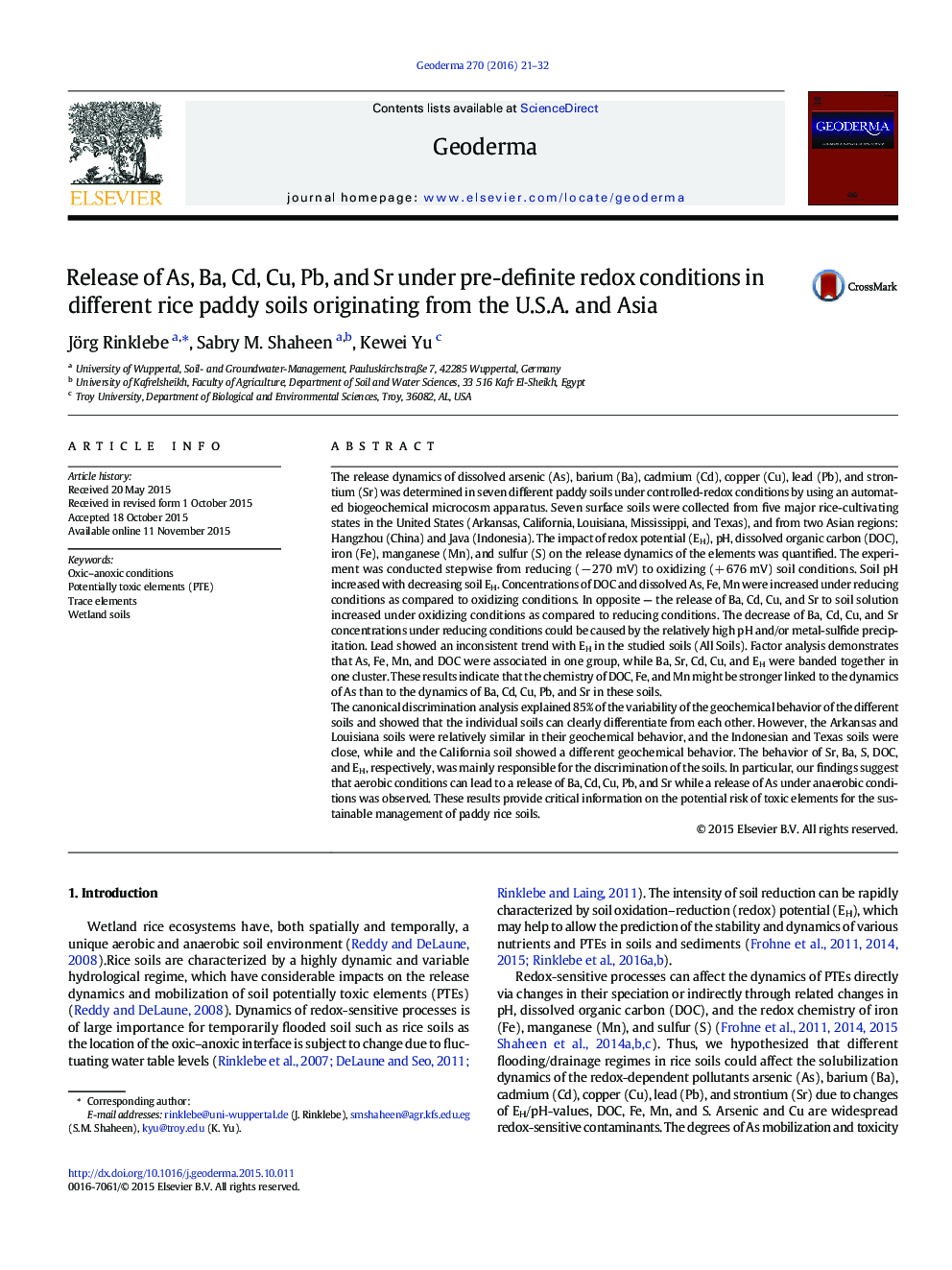| Article ID | Journal | Published Year | Pages | File Type |
|---|---|---|---|---|
| 4572954 | Geoderma | 2016 | 12 Pages |
•Seven paddy soils from five states in the U.S.A. and from China and Indonesia were studied.•Flooding was simulated using an automated biogeochemical microcosm apparatus.•Concentrations of As, Fe, Mn, DOC were high under anoxic conditions.•Release of Ba, Cd, Cu, and Sr was high under oxic conditions.•Individual soils can be discriminated based on their geochemical behavior.
The release dynamics of dissolved arsenic (As), barium (Ba), cadmium (Cd), copper (Cu), lead (Pb), and strontium (Sr) was determined in seven different paddy soils under controlled-redox conditions by using an automated biogeochemical microcosm apparatus. Seven surface soils were collected from five major rice-cultivating states in the United States (Arkansas, California, Louisiana, Mississippi, and Texas), and from two Asian regions: Hangzhou (China) and Java (Indonesia). The impact of redox potential (EH), pH, dissolved organic carbon (DOC), iron (Fe), manganese (Mn), and sulfur (S) on the release dynamics of the elements was quantified. The experiment was conducted stepwise from reducing (− 270 mV) to oxidizing (+ 676 mV) soil conditions. Soil pH increased with decreasing soil EH. Concentrations of DOC and dissolved As, Fe, Mn were increased under reducing conditions as compared to oxidizing conditions. In opposite — the release of Ba, Cd, Cu, and Sr to soil solution increased under oxidizing conditions as compared to reducing conditions. The decrease of Ba, Cd, Cu, and Sr concentrations under reducing conditions could be caused by the relatively high pH and/or metal-sulfide precipitation. Lead showed an inconsistent trend with EH in the studied soils (All Soils). Factor analysis demonstrates that As, Fe, Mn, and DOC were associated in one group, while Ba, Sr, Cd, Cu, and EH were banded together in one cluster. These results indicate that the chemistry of DOC, Fe, and Mn might be stronger linked to the dynamics of As than to the dynamics of Ba, Cd, Cu, Pb, and Sr in these soils.The canonical discrimination analysis explained 85% of the variability of the geochemical behavior of the different soils and showed that the individual soils can clearly differentiate from each other. However, the Arkansas and Louisiana soils were relatively similar in their geochemical behavior, and the Indonesian and Texas soils were close, while and the California soil showed a different geochemical behavior. The behavior of Sr, Ba, S, DOC, and EH, respectively, was mainly responsible for the discrimination of the soils. In particular, our findings suggest that aerobic conditions can lead to a release of Ba, Cd, Cu, Pb, and Sr while a release of As under anaerobic conditions was observed. These results provide critical information on the potential risk of toxic elements for the sustainable management of paddy rice soils.
